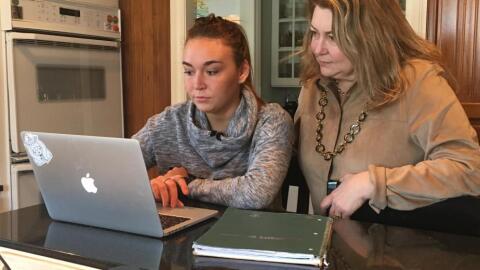Monday is the final day to comment on proposed changes to federal nutrition standards for school meals. The Trump administration proposed the changes meant to give schools increased flexibility after it said school officials and food providers struggled to meet the standards.
"We Want Healthier Options"
Talisa Dixon has been the superintendent of Cleveland Heights-University Heights schools for four years.
“But my first year there were two little girls that came to meet with me and said Superintendent Dixon, we want to talk to you about our school lunch,” Dixon said.
She agreed to attend lunch with the two fourth graders at their elementary school, where she said aside from the nutritional value of the meal, the lunch didn’t look appetizing.
The students didn’t ask Dixon for more pizza or French fries, but wanted healthier options. Dixon said she took on a review process, talking to parents and educators and ultimately, the district decided it needed a new food vendor who could provide what the students wanted.
Salad bars with fresh fruits and vegetables became a standard in her schools and while it cost the district more to provide them, Dixon believes it was worth it.
“We know that fresh foods are good for our students, give them more energy, and have them more prepared,” she said.
Federal School Nutrition Standards
Before Dixon took over as superintendent, the U.S. Department of Agriculture began phasing in stricter guidelines for school meals as part of the Obama administration’s focus on healthy kids.
In 2012, schools were no longer allowed to serve flavored milks that were anything but non-fat. By 2014, they were to serve only products that were made up of at least 50 percent whole grains, and over a 10-year period, were to meet reduced sodium standards.
The Cleveland Metropolitan School District started implementing the changes, district Executive Director for School Nutrition Chris Burkhardt said, but some of the guidelines, especially the second phase of low sodium targets beginning to take effect, became increasingly more difficult to hit.
“Because there’s naturally occurring sodium in many food products, it’s going to become quite difficult to do it every day and across the 180 days that we serve,” Burkhardt said, although he has been working with manufacturers and CMSD staff alike to find recipes that work.
But with a proposed roll back of some of the more stringent guidelines, Burkhardt may no longer have to struggle with that problem.
The Trump Administration Proposal
In the fall, the USDA began the process to give schools more flexibility in their foods by proposing a rule change. That rule is currently on public comment, but will likely take effect July 1, 2018.
It would allow schools to serve low-fat, or 1 percent, flavored milks, halts the further reduction of sodium content, and grants some exceptions for the whole grain guideline, including tortillas and pasta.
Those foods, Burkhardt said, were particularly difficult to provide at the quality students were used to.
“We really haven’t found a whole grain pasta that holds up really well when you’re making it for anywhere from 300 to 600 students,” Burkhardt said. “It tends to get clumpy and stick together.”
Burkhardt doesn’t see the proposed rule change as a roll back of nutritional standards, but giving districts more time to work with their vendors to find the options that allow him to balance nutrition with taste.
“I can put the best menu together that checks every single box for USDA regulations, but if students don’t eat it or they put it in the trash can, there’s no nutrition that’s happening at all,” he said.
Burkhardt added he’s glad the USDA is starting to listen to the concerns of nutrition directors and food vendors across the country who needed more time to meet the guidelines.
Dixon said her district didn’t anticipate having trouble meeting the more stringent guidelines, but meals in her schools won’t change in the upcoming school year.






